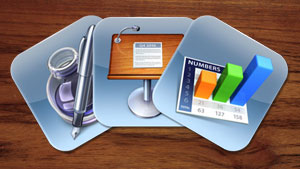The validity of the iPad as a casual device—something you can use to check your e-mail, surf the Internet on the couch, or watch a movie in bed—has never really been in question. The real question is, "Can I convince my boss to buy me one?" Unless your boss is Michael Scott, chances are he’s going to want to know if you can actually be productive with it. With its port of the iWork desktop suite, Apple is hoping that you can be, and that the iPad can be more than a toy.
“I’m an importer/exporter.”
iWork for the iPad wouldn’t be of much use if you could create documents only to have them constrained to the device. Fortunately, Apple has included import and export functionality; unfortunately, that import and export functionality isn’t very good. There are three import/export flavors to choose from, multiple formats, a cable, and an application that is already asked to do too much.
When it comes to importing and exporting, your best bet is e-mail. You can import Word and Pages documents into Pages, Excel and Numbers documents into Numbers, and Powerpoint and Keynote documents into Keynote from any e-mail you receive.
Exporting through e-mail, on the other hand, isn’t as flexible. You can export a Pages document as a Pages document, a Word document, or a PDF; a Keynote presentation in the native format or a PDF (PPT format is inexplicably left out); and a Numbers document in Numbers format or as a PDF (no XLS exporting). While the choices would be excellent if all our colleagues used iWork on a Mac, the majority do not. So the suite's e-mail export functionality is lacking, which is sad, because it’s the best option. If you need to make a few quick changes to that Excel spreadsheet that your colleague sent to you and then send it back to her quickly, you'll have to send it back in Numbers format and hope she can do the conversion on her end.


 Loading comments...
Loading comments...
